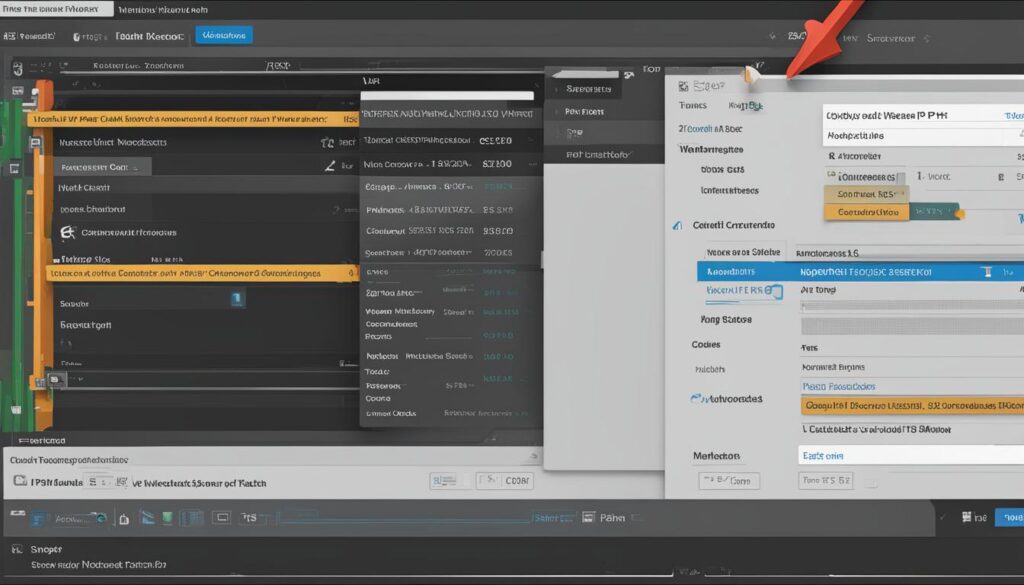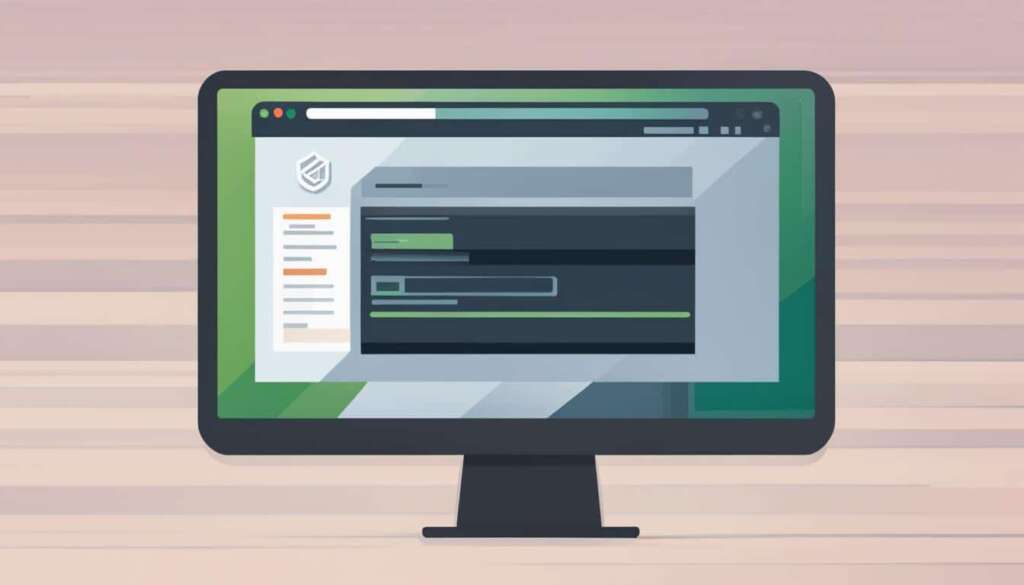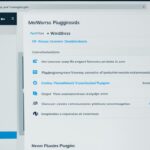Table of Contents
Updating the PHP version of your WordPress site is crucial to ensure optimal performance, security, and compatibility. By staying up to date with the latest PHP version, you can enhance the speed of your site, protect it from potential vulnerabilities, and ensure seamless compatibility with the latest plugins and themes. In this step-by-step guide, we will walk you through the process of updating PHP in WordPress, empowering you to take control of your site’s PHP version and unlock its full potential.
Why Update the PHP Version of Your WordPress Site?
Keeping your WordPress site up to date is crucial for maintaining its security and performance. One important aspect of this is updating the PHP version used by your site. By updating PHP, you can enhance its security and speed, providing a better experience for your visitors.
Security:
Updating the PHP version protects your site against security vulnerabilities. As PHP is widely used in web development, it is a target for hackers who exploit any weaknesses in older PHP versions. By staying updated, you reduce the risk of malware infections or unauthorized access to your site.
Speed:
Updating PHP can significantly improve the speed and overall performance of your WordPress site. Each PHP update brings performance enhancements and optimizations, allowing your site to handle more visitors and process requests more efficiently. This results in faster page loading times and smoother user interactions.
Updating the PHP version of your WordPress site is like strengthening the foundation of your house. It provides a solid base for your site’s security and ensures that it can handle the demands of modern web development, delivering a faster and more secure experience for your visitors.
In addition to enhanced security and speed, updating PHP also ensures compatibility with the latest plugins and themes, as they often rely on newer PHP features and functions. By keeping your PHP version up to date, you can take advantage of the latest advancements in WordPress development, unlocking new possibilities for your site.
To give you a clear understanding of the benefits of updating PHP in WordPress, here’s a comparison table:
| Benefits of Updating PHP Version in WordPress | Old PHP Version | Updated PHP Version |
|---|---|---|
| Security | Increased risk of vulnerabilities and malware | Protection against security threats |
| Speed | Slower page loading times | Faster site performance |
| Compatibility | Potential incompatibility with new plugins and themes | Ensured compatibility with the latest WordPress ecosystem |
As you can see, updating the PHP version of your WordPress site brings numerous benefits and is essential for its overall health and functionality. In the next section, we will guide you on how to check the PHP version used by your WordPress site.
How to Check the PHP Version in WordPress
Checking the PHP version in WordPress is a simple process that allows you to ascertain the current PHP version used by your hosting provider. By staying up to date with the latest PHP version, you can ensure optimal performance, security, and compatibility for your WordPress site. Here are a few methods to check the PHP version:
- Using the WordPress Admin Dashboard: Navigate to the Tools > Site Health section in your WordPress admin dashboard. On the Site Health page, switch to the Info tab to find the PHP version used by your hosting provider.
- Utilizing the WordPress Site Health Tool: WordPress provides a built-in Site Health tool that can be accessed via the Tools > Site Health section in your WordPress admin dashboard. Within the Site Health tool, you can find information about your site’s PHP version.
- Accessing the PHP Engine in your Hosting Dashboard: Another way to check the PHP version is by accessing the PHP engine through your hosting provider’s dashboard. The specific location may vary depending on your hosting provider, but it is often found within a section dedicated to managing server settings or PHP configuration.
Once you have identified the PHP version used by your WordPress site, you can proceed with updating it to ensure a secure and optimized environment.

Note: The image above illustrates the process of checking the PHP version in WordPress.
Benefits of Checking the PHP Version in WordPress
Regularly checking the PHP version of your WordPress site is essential for maintaining site health, optimizing performance, and ensuring compatibility with the latest WordPress features and plugins. By staying up to date with the PHP version, you can:
- Stay informed about the technology running your WordPress site.
- Identify potential compatibility issues and take necessary measures in advance.
- Maintain a secure environment by keeping up with the latest PHP security patches.
- Ensure your site performs optimally and delivers a smooth user experience.
By following the steps mentioned above, you can easily check the PHP version in WordPress and take appropriate actions to keep your site in optimal condition.
Methods to Check the PHP Version in WordPress
| Method | Description |
|---|---|
| Using the WordPress Admin Dashboard | Navigate to the Tools > Site Health section in your WordPress admin dashboard and switch to the Info tab to find the PHP version. |
| Utilizing the WordPress Site Health Tool | Access the Site Health tool through the Tools > Site Health section in your WordPress admin dashboard to view the PHP version. |
| Accessing the PHP Engine in your Hosting Dashboard | Check the PHP version through your hosting provider’s dashboard, usually found in a section dedicated to server settings or PHP configuration. |
How to Update PHP in WordPress
Before updating PHP in WordPress, it is important to take certain precautions to ensure a smooth transition. One recommended step is to create a staging site, which allows you to test the new PHP version’s compatibility without affecting your live site. This minimizes the risk of any issues or disruptions to your website’s functionality.
To create a staging site, follow these steps:
- 1. Duplicate your existing WordPress site onto a separate staging environment.
- 2. Ensure that the staging site is set up with the same WordPress version, theme, and plugin configurations as your live site.
- 3. Disable any caching or performance optimization plugins on the staging site to accurately assess the impact of the PHP update.
Once your staging site is ready, you can proceed with updating the PHP version:
- 1. Access the PHP engine tool in your hosting dashboard. The location of this tool may vary depending on your hosting provider.
- 2. Look for an option to change or update the PHP version.
- 3. Select the desired PHP version from the available options.
- 4. Confirm your choice to initiate the PHP update process.
Give your hosting provider some time to apply the PHP update to your staging site. This process may take a few minutes or longer, depending on your hosting environment. Once the update is complete, you can begin testing your site on the staging environment.
To ensure everything is working properly, follow these steps:
- 1. Visit different pages of your staging site to check for any errors, broken functionality, or compatibility issues.
- 2. Test any interactive elements, such as forms, plugins, or e-commerce functionality, to ensure they are working as expected.
If you encounter any issues or notice any problems after updating the PHP version, you can make necessary adjustments on the staging site before applying the update to your live site.
Updating PHP in WordPress is a crucial step to ensure your website remains secure, performant, and compatible with the latest technologies. By creating a staging site and thoroughly testing the new PHP version, you can minimize the risk of any disruptions to your live site and address any potential issues proactively.
Remember: always backup your site before making any significant changes, and consult with your hosting provider or a qualified developer if you have any doubts or concerns about updating PHP.
Additional Tips for Updating PHP in WordPress:
- Ensure that your active theme and plugins are compatible with the new PHP version before updating.
- Consider updating your theme and plugins to their latest versions to ensure optimal compatibility.
- Monitor your website closely after updating PHP to catch any potential issues early.
- Pay attention to error logs or any error messages that appear after the update.
Troubleshooting Issues After Updating PHP in WordPress
In some cases, updating PHP versions can lead to issues with your WordPress site. This is especially true if your site’s code utilizes outdated functions that are no longer supported by the new PHP version. As a result, you may experience site breakage and encounter compatibility problems with plugins and themes.
If your site breaks after updating PHP, the likely culprits are plugins or an active theme that is not compatible with the new PHP version. To identify and resolve the compatibility issue, follow these troubleshooting steps:
-
Deactivate third-party plugins: Start by deactivating all third-party plugins installed on your WordPress site. You can do this by navigating to the Plugins section in your WordPress admin dashboard and selecting the “Deactivate” option for each plugin.
-
Switch to a default WordPress theme: After deactivating the plugins, switch your site’s theme to a default WordPress theme such as Twenty Twenty-One. This will help determine if the compatibility issue lies within the active theme.
-
Re-enable plugins and themes: Once you have switched to a default theme, gradually reactivate the plugins and themes one by one. After each activation, test your site to identify the incompatible plugin or theme. If your site breaks again after reactivating a specific plugin or theme, it is likely causing the compatibility issue.
-
Check error logs and enable debugging options: To further investigate the specific error causing the breakage, check your site’s error logs and enable debugging options. Error logs can provide valuable information about the source of the issue, while enabling debugging options can help display error messages and warnings that can aid in troubleshooting.
By following these troubleshooting steps, you can identify and resolve compatibility issues that arise after updating PHP in WordPress. It is crucial to ensure that your site remains functional and compatible with the new PHP version for optimal performance and security.
Example Error Log Entry:
[24-Feb-2022 12:34:56 UTC] PHP Fatal error: Uncaught Error: Call to undefined function outdated_function() in /path/to/theme/functions.php:58
Stack trace:
#0 /path/to/theme/index.php(10): include_once()
#1 {main}
thrown in /path/to/theme/functions.php on line 58
Remember to reach out to plugin or theme developers for updates or alternatives if they are no longer compatible with the latest PHP version.
Stay vigilant when updating PHP in WordPress, and address any compatibility issues promptly to maintain a smooth and functional website.
Changing PHP Version in Popular Hosting Environments
The process of changing the PHP version may vary depending on your hosting provider. In popular hosting environments like Bluehost, Hostinger, SiteGround, HostGator, and WP Engine, you can usually change the PHP version through the hosting control panel or dashboard. Each provider may have a slightly different interface and process, but the general steps involve accessing the PHP configuration or MultiPHP Manager, selecting the desired PHP version, and applying the changes.
If you are using Bluehost, you can change the PHP version by following these steps:
- Login to your Bluehost account and go to the cPanel.
- Locate the Software section and click on the “MultiPHP Manager” icon.
- Select the domain or website for which you want to change the PHP version.
- Choose the desired PHP version from the dropdown menu.
- Click on the “Apply” button to save the changes.
- Log in to your Hostinger account and go to the hPanel.
- Scroll down to the “Advanced” section and click on “PHP Configuration”.
- Select the domain or website from the dropdown menu.
- Choose the desired PHP version from the available options.
- Save the changes by clicking on the “Save Configuration” button.
SiteGround users can change the PHP version using the following steps:
- Login to your SiteGround account and go to the “Websites” tab.
- Select the website for which you want to change the PHP version.
- Click on the “Site Tools” button.
- Navigate to the “PHP Manager” section.
- Choose the desired PHP version from the dropdown menu.
- Click on the “Save” button to apply the changes.
If you are using HostGator, you can change the PHP version by following these steps:
- Log in to your HostGator cPanel.
- Scroll down to the “Software” section and click on “Select PHP Version”.
- Choose the desired PHP version from the dropdown menu.
- Click on the “Set as current” button to save the changes.
For WP Engine users, the process is as follows:
- Login to your WP Engine account and navigate to the “Install” tab.
- Find the installation where you want to change the PHP version and click on “Settings”.
- Select the desired PHP version from the dropdown menu.
- Click on the “Save Changes” button.
Remember to consult the documentation or support resources provided by your specific hosting provider for detailed instructions on changing the PHP version.
Conclusion
Updating the PHP version of your WordPress site is crucial for optimizing its performance, enhancing security, and ensuring compatibility. By following the step-by-step guide provided and considering the troubleshooting tips, you can successfully update the PHP version of your WordPress site.
Always remember to create a staging environment before making any changes, allowing you to test compatibility and identify any potential issues. Additionally, it is essential to backup your site to avoid data loss during the update process.
By keeping your PHP version up to date, you can benefit from improved site speed, enhanced security against potential vulnerabilities, and better compatibility with the latest WordPress plugins and themes. With a faster and more secure website, you can provide your visitors with an optimal browsing experience and increase user engagement.
FAQ
Why is it important to update the PHP version of my WordPress site?
Updating the PHP version of your WordPress site is important for security and performance reasons. It helps protect your site against vulnerabilities and ensures compatibility with the latest plugins and themes, resulting in better speed and security.
How can I check the PHP version in WordPress?
To check the PHP version in WordPress, navigate to the Tools > Site Health section in your WordPress admin dashboard. Switch to the Info tab to find the PHP version used by your hosting provider. Alternatively, you can use the WordPress Site Health tool or access the PHP engine in your hosting dashboard.
How do I update PHP in WordPress?
Before updating PHP, it is recommended to create a staging site to test compatibility. Access the PHP engine tool in your hosting dashboard and select the desired PHP version. Confirm your choice and allow your host some time to apply the update. Then, test your site on the staging environment to ensure everything is working properly.
What should I do if my site breaks after updating PHP?
If your site breaks after updating PHP, it may be caused by incompatible code in plugins or active themes. Deactivate all third-party plugins and switch to a default WordPress theme. Then, re-enable plugins and themes one by one to identify the one causing the issue. Check error logs and enable debugging options to pinpoint the specific error.
How do I change the PHP version in popular hosting environments?
The process of changing the PHP version may vary depending on your hosting provider. In popular hosting environments like Bluehost, Hostinger, SiteGround, HostGator, and WP Engine, you can usually change the PHP version through the hosting control panel or dashboard. Access the PHP configuration or MultiPHP Manager, select the desired PHP version, and apply the changes.
Why should I update PHP in WordPress?
Updating the PHP version in WordPress is essential for optimal performance, security, and compatibility. It improves site speed, enhances security by protecting against vulnerabilities, and ensures compatibility with the latest WordPress plugins and themes.












